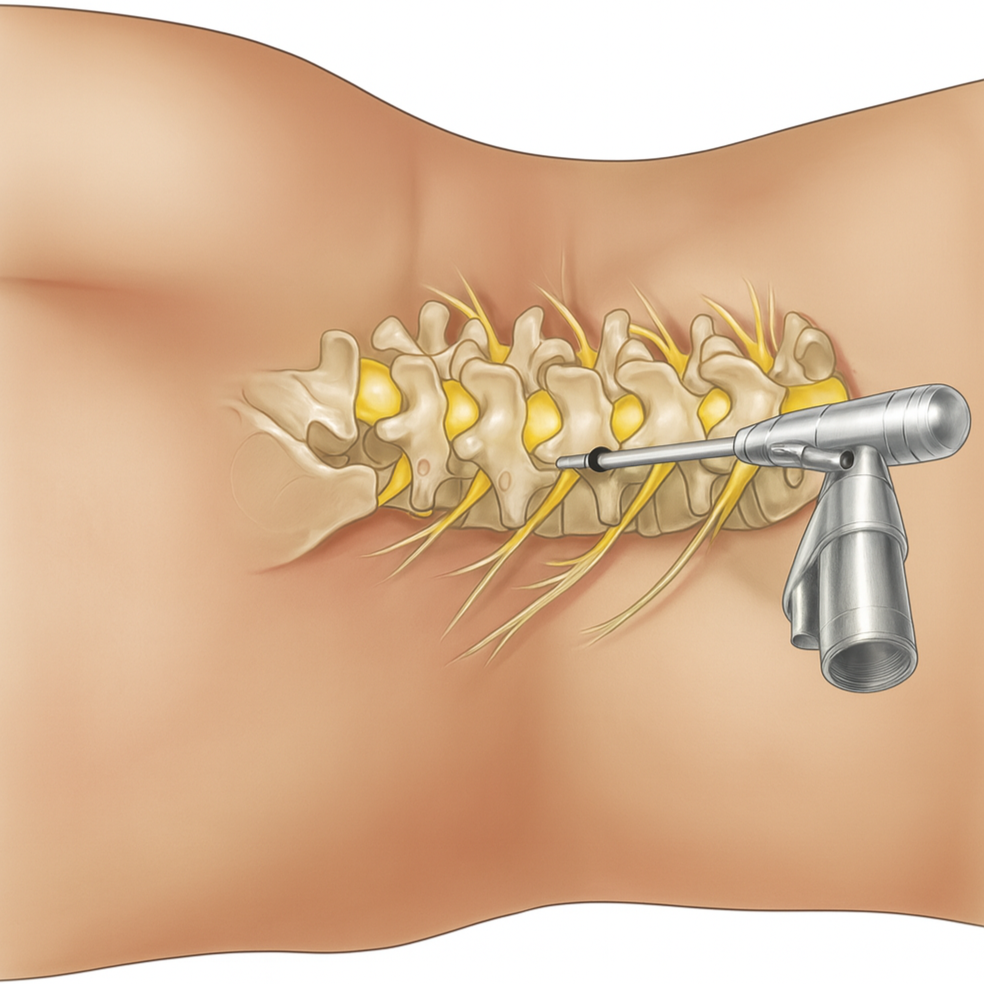Lumbar Endoscopic Laminectomy
/Discectomy
What is a lumbar endoscopic laminectomy/discectomy?
An endoscopic lumbar laminectomy or discectomy is one of the newest, least invasive options available for treating pinched nerves in the spine. The procedure is done through an incision no bigger than the tip of a pen, using a tiny camera (endoscope) to guide the surgeon—similar to the way arthroscopic cameras are used in knee surgery. This allows bone spurs or herniated discs that are pressing on the nerves to be carefully removed with minimal soft tissue disruption.
Dr. B has completed the ISSLS clinical traveling fellowship and gained further advanced training in spinal endoscopy from leading experts at Wooridul Spine Hospital in Seoul, South Korea, considered one of the leading institutions in the world for endoscopic spine surgery.
-
A lumbar endoscopic laminectomy or discectomy may be recommended for patients who:
Have a herniated lumbar disc or lumbar spinal stenosis causing nerve compression.
Experience sciatica (leg pain), numbness, tingling, or weakness that interferes with daily activities.
Have not improved with conservative treatments such as medications, physical therapy, or injections over several weeks to months.
Prefer a minimally invasive approach that allows smaller incisions, less muscle damage, and quicker recovery compared to traditional open surgery.
In urgent cases, develop progressive weakness or sudden changes in bladder or bowel control (which may require more immediate surgery).
Not all patients are suitable candidates for a lumbar endoscopic laminectomy or discectomy. Dr. B will review your condition and perform a thorough evaluation to determine whether an endoscopic approach is appropriate for you.
-
A lumbar endoscopic laminectomy or discectomy is performed through a very small incision in the lower back, typically less than a centimeter. Through this incision, Dr. B inserts a thin tube called an endoscope, which has a camera and light to provide a magnified view of the spine. Specialized surgical instruments are then utilized, either through the endoscope or a separate tiny incision, to reach the herniated disc or the area of spinal canal narrowing. Dr. B then carefully removes the portion of the bone or disc material that is compressing the nerves under a magnified view. Once the procedure is complete, the instruments and endoscope are removed, and the tiny incision is closed with a few stitches or surgical adhesive. This minimally invasive approach causes less muscle and tissue disruption, reduces blood loss, results in a smaller scar, and allows for a quicker recovery compared to traditional open surgery.
Most patients are able to return home the day of surgery.
-
The advantages of a lumbar endoscopic laminectomy or discectomy include:
Minimally invasive: Performed through a very small incision, reducing tissue trauma.
Less muscle damage: Preserves surrounding muscles compared to open surgery.
Reduced blood loss during the procedure.
Smaller scar due to the tiny incision.
Shorter hospital stay – often done as an outpatient procedure.
Faster recovery – patients can return to daily activities sooner.
Lower postoperative pain and reduced need for narcotic pain medications.
Precise visualization of the spine through the endoscope, allowing targeted removal of the problematic disc or bone.
-
Please refer to our Patient Education Booklet for detailed information.
Disclaimer: All materials presented on this website are the opinions of Dr. Patawut “Pat” Bovonratwet, or Dr. B, and any guest writers, and should not be construed as medical advice. Each patient’s specific condition is different, and a comprehensive medical assessment requires a full medical history, physical exam, and review of diagnostic imaging. If you would like to seek the opinion of Dr. B for your specific case, we recommend contacting our office to make an appointment.

